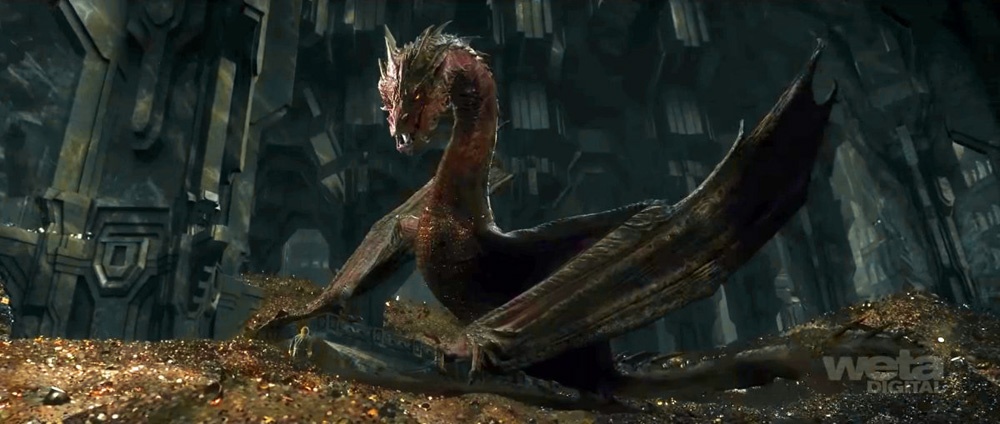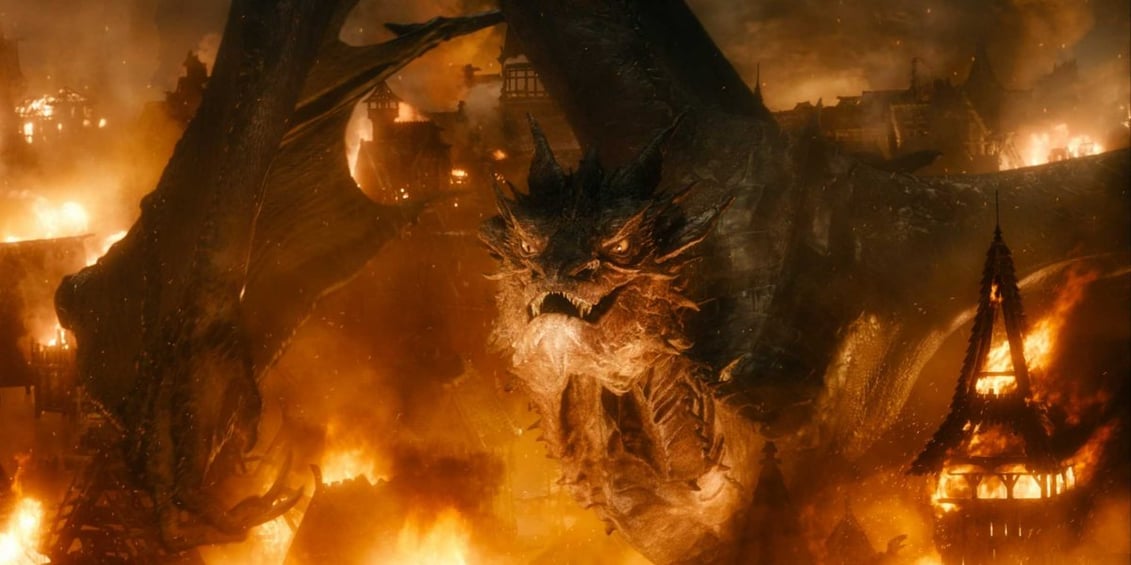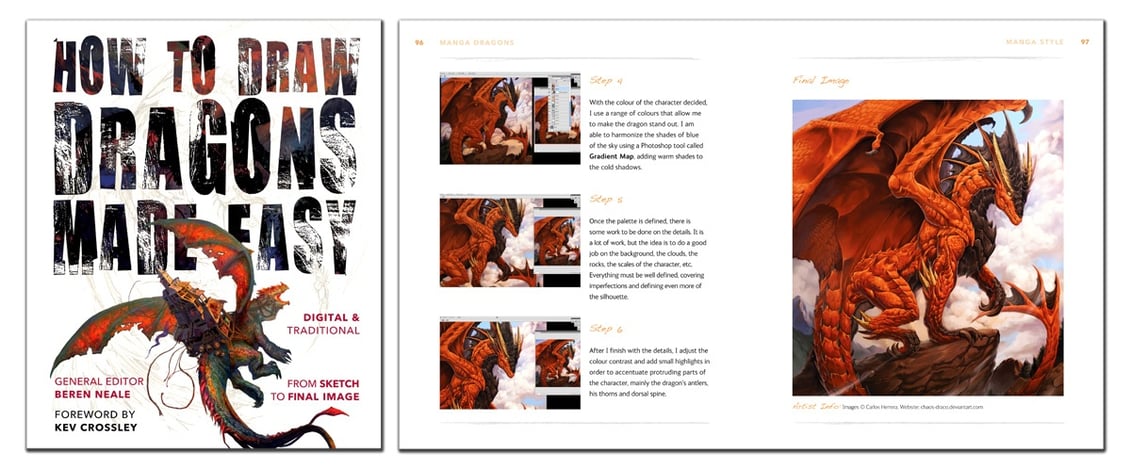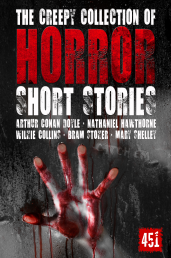
Of all the wonderful creatures that inhabit our imagination, dragons are indubitably the most inspiring, to children and adults alike. Fantasy would not be the same without dragons and they can be found in almost every epic story, although they do not all leave the same impression. We present our most heartfelt apologies to Toothless, Viserion and fellow Hungarian Horntails, but if we had to pick one our personal favourite it would definitely be J.R.R. Tolkien’s mighty Smaug the Magnificent, Smaug the Golden, or whatever he’s getting people to call him these days.
The S(n)ack of Erebor
Smaug’s date of birth remains unknown, but the rumour has it he was one of the dragons to drive the Dwarves out of the Grey Mountains around the year 2589 of the Third Age. In T.A. 2590 King Thrór made his way back to Erebor with the infamous Arkenstone to rebuild the Kingdom under the Mountain, where Dwarves enjoyed two centuries of prosperity before Smaug caught wind of the tremendous riches hidden deep in the Lonely Mountain and, vexed over his own unremarkable trust fund, decided to claim the Dwarves’ treasure in Erebor. In T.A. 2770 Smaug came down from the North to attack the Lonely Mountain, setting the wooden parts of its structure on fire in order to smoke the Dwarves out. When the latter tried to escape through the front door – which was an arguably bad idea although they might not have had time to come up with anything smarter, being chased by a gigantic fire-breathing monster and all – he slaughtered them as well as the warriors who had come from the nearby city of Dale in an attempt to aid their neighbours. Weary from all this mass murdering and having no food left to play with, the beast crawled through the entrance of the Lonely Mountain and made its bed on top of the colossal pile of gold the Dwarves had been amassing for 180 years.
The Demise of the Beast
The next two centuries were relatively quiet. Well, at least for Smaug they were. Aside from the occasional maiden-barbecue Smaug spent most of his time lounging in his golden bed and keeping a precise ledger of everything it was made of. The now grim, barren surroundings of his new home became known as the ‘Desolation of the Dragon’. When he caught Bilbo Baggins sneaking around his lair he was intrigued by this cunning creature he had never smelled the likes of. It was his hubris that led him to his death: amused by the idea of a bunch of half-men trying to get revenge on him, he could not resist taunting them by displaying his unbreakable armour and unknowingly revealing a bare patch on his jewel-encrusted breast. Although Smaug trapped Thórin and Company inside the Lonely Mountain, a thrush that had been listening to their conversation flew to warn Bard, the descendent of the last Lord of Dale, of Bilbo’s game-changing discovery – because yes, Lake-men can understand thrushes, this is Middle-Earth after all. As Smaug was descending on the Lake-town of Esgaroth, Bard was able to make a perfect aim for his weak spot using a magical arrow that could never miss its target – again, Middle-Earth, you know the drill. The survivors built a new Lake-town further north: even dead, Smaug inspired so much dread that no one dared come close to his carcass and it remained untouched, surrounded by the gold and jewels that had one by one fallen off the dragon’s scales.

The Depictions of Smaug
Since The Hobbit was first published in 1937, Smaug has been a source of inspiration for many artists. J.R.R. Tolkien himself drew the illustrations for the first edition of the book, which is already pretty impressive – though not that surprising considering the tremendous amount of work he put into the whole Middle-Earth project. Following editions have had many different illustrators although two particularly stand out. The first is Alan Lee, who illustrated several of Tolkien’s pieces of writing including The Lord of the Rings; the second is John Howe who worked on most of Tolkien’s masterpieces. Peter Jackson was in regular consultation with both artists throughout the production of The Hobbit to ensure the trilogy was visually consistent with The Lord of the Rings.
Numerous other illustrators added Smaug to their portfolio; among them are David Wenzel who adapted The Hobbit into a graphic novel, Jef Murray who was also one of the artists for C.S. Lewis’ Chronicles of Narnia, and Ulla Thynell whose fabulous reinvention of the dragon you can find by clicking right here.
Smaug is also featured in the 1966 and 1977 animated The Hobbit film adaptations, and in the 1982 and 2003 video game adaptations of the same name. Weta Digital, the company in charge of props and visual effects for the films, recently released a beautiful collectible bust of Smaug on the occasion of the New York Comic Con. And of course, last but not least is Benedict Cumberbatch’s terrifying impersonation of Smaug in the most recent Hobbit films, proving once again, as we already discussed in our 8 Most Effective On-Screen Dragons blog, that dragons are the best.
Our awesome book How to Draw Dragons Made Easy is packed to the brim full of jaw-dropping dragon art, alongside insightful information that will help you create your own fantastical illustrations. Take a closer look at the title here.
Links





